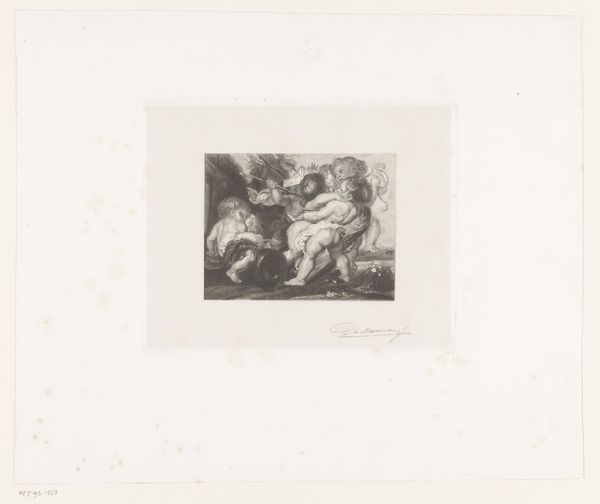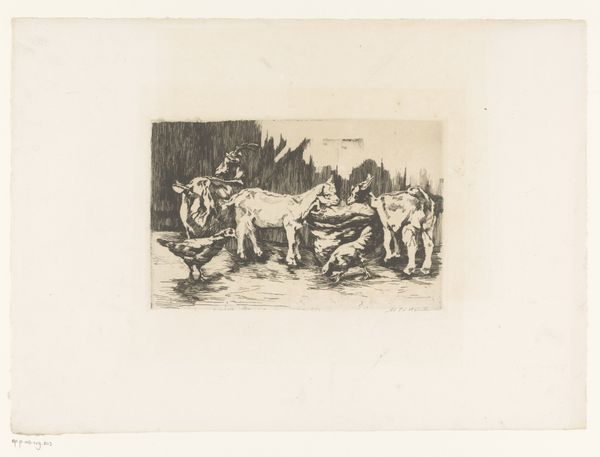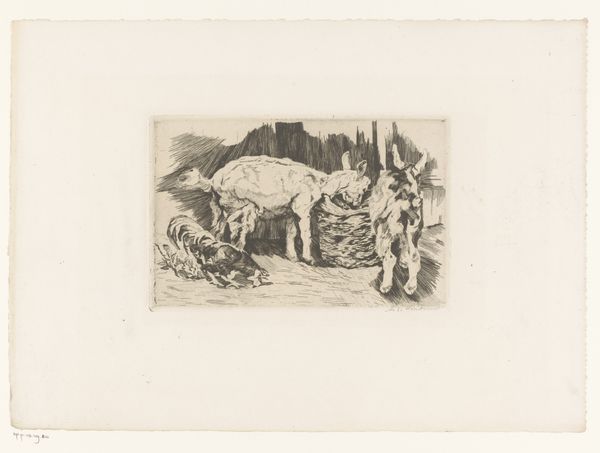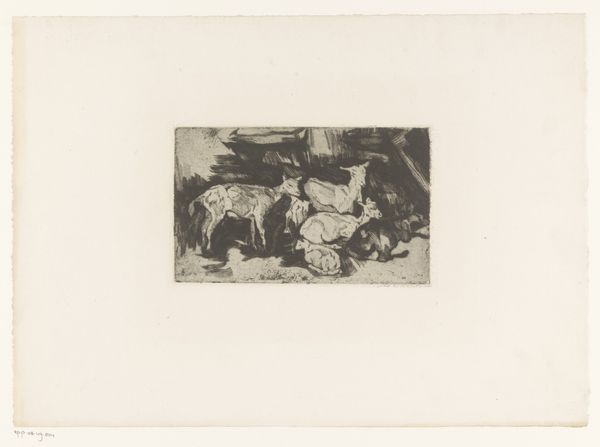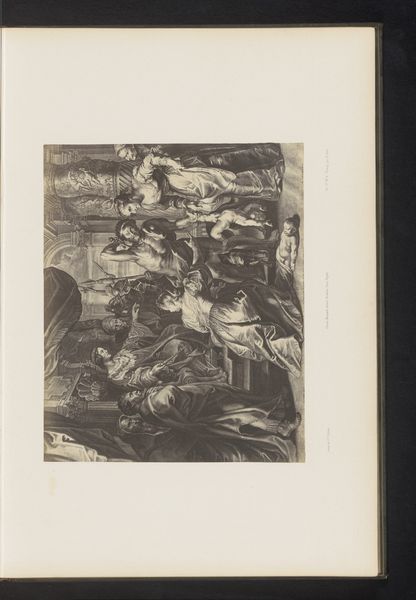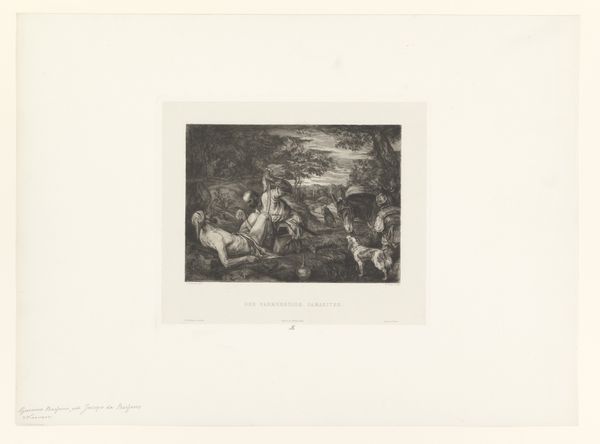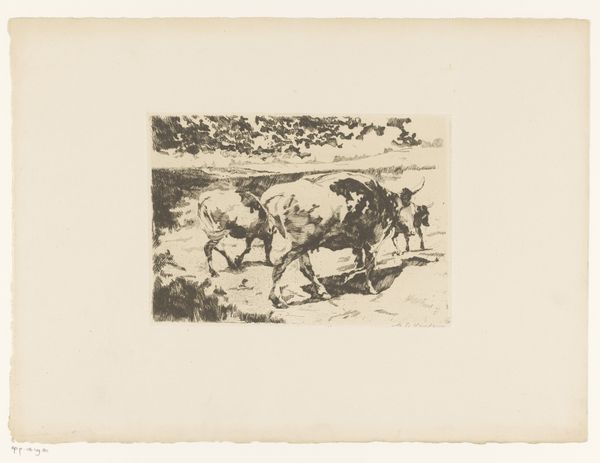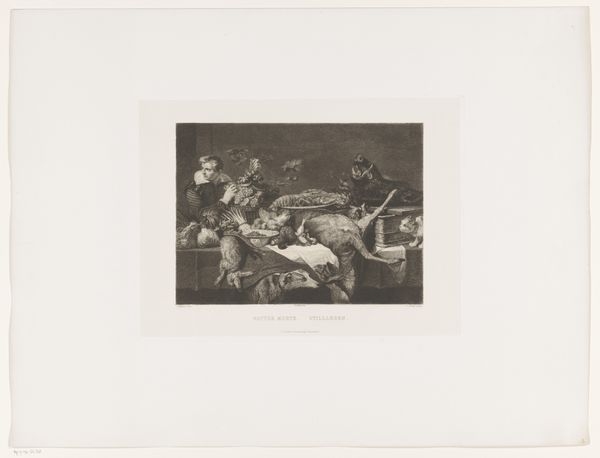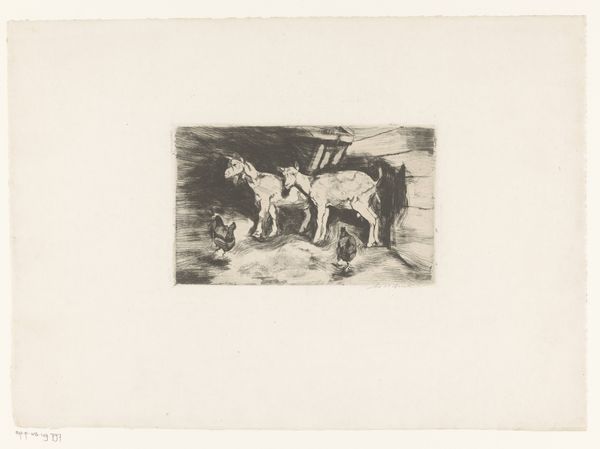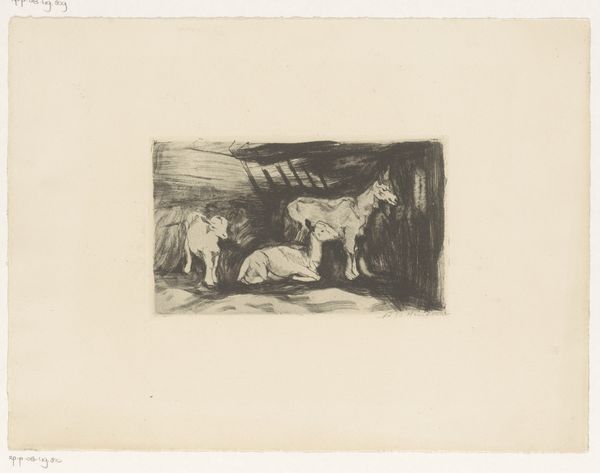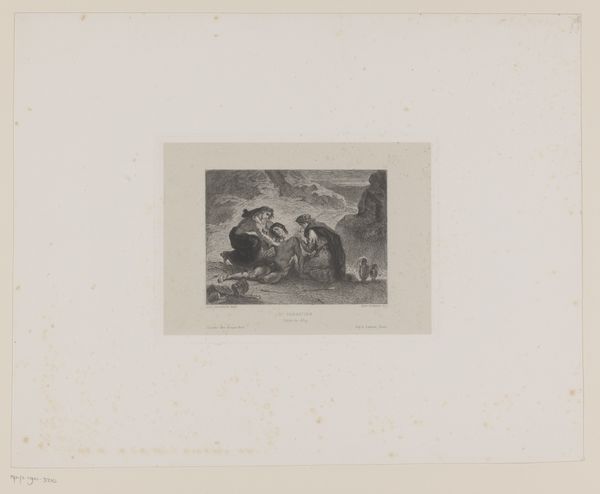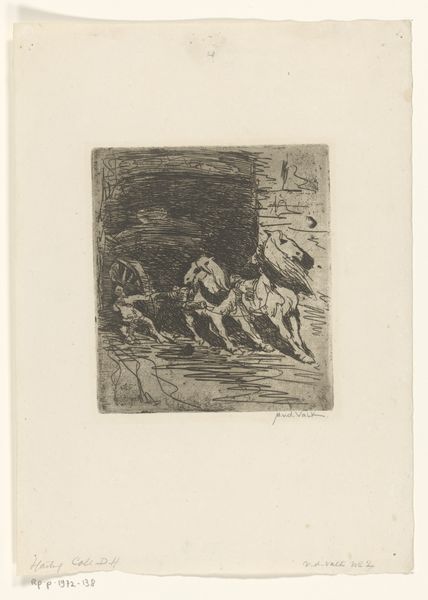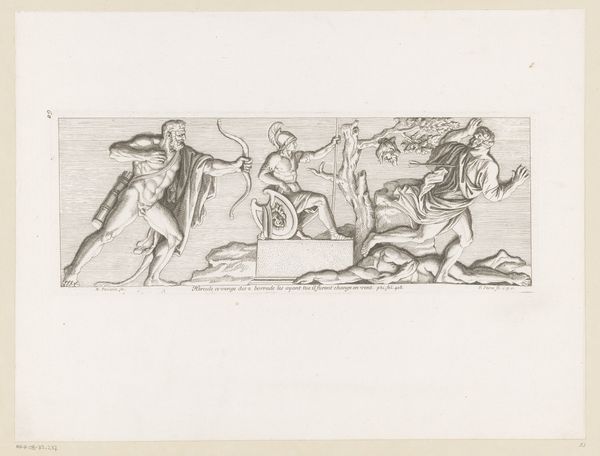
drawing, print, etching, paper, ink
#
drawing
#
ink paper printed
# print
#
etching
#
pencil sketch
#
landscape
#
paper
#
ink
#
genre-painting
Dimensions: height 155 mm, width 238 mm
Copyright: Rijks Museum: Open Domain
Curator: Editor: This is "Two Goats and Five Chickens" by Adolf Eduard Herstein, created sometime between 1879 and 1932. It’s an etching on paper currently held at the Rijksmuseum. I’m immediately struck by how grounded and real it feels. It's not idealized in any way. What draws your eye? Curator: What intrigues me is how the work implicates the very means of its creation into its meaning. Look at the etched lines – they’re not just depicting the animals, but showcasing the labor of image production itself. The texture of the paper, the depth of the ink… how do these elements impact your understanding of the scene? Editor: That’s a really interesting point. I was focused on the animals and their environment, but I see what you mean. The etching process, with its repetitive labor, mirrors the repetitive, perhaps mundane, existence of these farm animals. The medium becomes part of the message? Curator: Precisely! Consider too, the likely audience and purpose of a printed work like this. Was it intended for mass consumption, as decoration, or for a more elite collector? What does its circulation tell us about art markets and value judgments at that time? This blurring of art and commodity complicates simple ideas of high and low art. Do you think Herstein consciously engaged with those ideas? Editor: That’s something I hadn’t thought about – the work’s role as a commodity. I’d assumed it was simply about capturing a slice of life. Maybe he was commenting on the changing role of art itself in society. Now I am also starting to think about who acquired and collected similar pieces back then. Curator: Exactly! By examining the materials, techniques, and potential social context, we start to see the artwork not just as a picture, but as a product deeply intertwined with economic and social realities. Editor: This completely shifted my perspective. It is indeed interesting how focusing on material aspects changes our comprehension of the work's intent and context! Thank you. Curator: My pleasure! Remember to look beyond the surface; the materiality of art tells important stories.
Comments
No comments
Be the first to comment and join the conversation on the ultimate creative platform.

